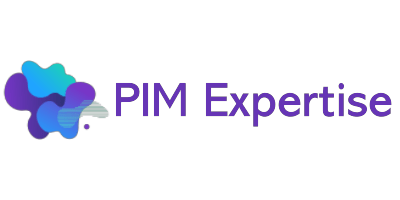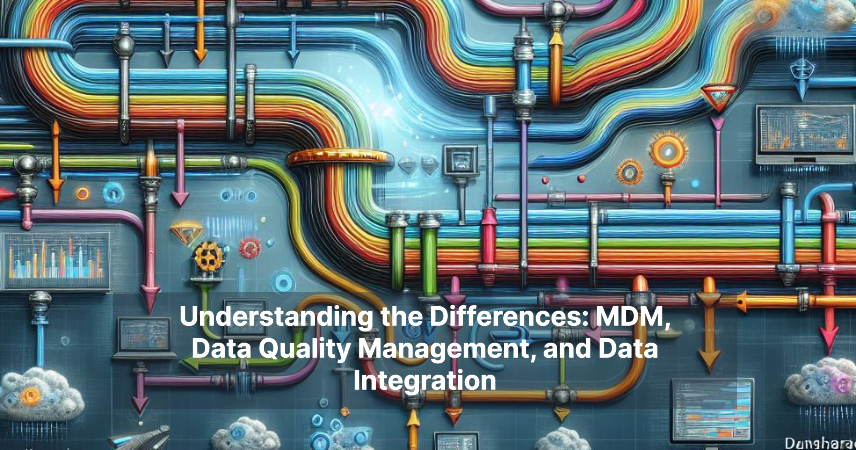Strategies for Ensuring MDM Scalability and Performance

Master Data Management (MDM) is a crucial aspect of modern data-driven businesses, facilitating the consolidation, cleansing, and synchronization of master data across various systems. However, as organizations deal with increasingly large volumes of data and complex data relationships, ensuring the scalability and performance of MDM systems becomes paramount. In this article, we delve into the strategies and best practices for addressing these challenges.
Understanding MDM Scalability
What is scalability in the context of MDM? Scalability refers to the ability of an MDM system to handle growing volumes of data, users, and transactions without sacrificing performance or stability. Essentially, it’s about ensuring that the system can grow seamlessly as the demands placed on it increase.
Factors influencing scalability Several factors influence the scalability of an MDM system, including the volume of data being managed, the number of concurrent users accessing the system, and the complexity of data relationships within the master data model.
Importance of Performance in MDM
Definition of Performance in MDM
Performance, in the context of MDM, refers to the speed and responsiveness of the system in processing data, executing queries, and delivering results to end-users.
The Impact of Poor Performance
Can have significant consequences for organizations, leading to delays in decision-making, reduced productivity, and even loss of revenue. It can also result in dissatisfaction among users, tarnishing the reputation of the MDM system and undermining trust in the data it manages.
Role of performance in user experience and business operations
A high-performing MDM system not only enhances user experience by providing quick access to accurate data but also enables organizations to operate more efficiently by streamlining business processes and facilitating timely decision-making.
Scalability Strategies
Data Partitioning
Dividing the master data into smaller partitions based on certain criteria, such as geographic location or business unit, can improve scalability by distributing the workload across multiple nodes or servers.
Horizontal scaling
Involves adding more nodes or servers to distribute the workload horizontally, thereby increasing the system’s capacity to handle more data and users.
Vertical scaling
On the other hand, involves upgrading the existing hardware resources, such as CPU, memory, or storage, to accommodate growing demands. While vertical scaling can provide a quick solution, it may have limitations in terms of scalability compared to horizontal scaling.
Distributed Architectures
Implementing a distributed architecture, where different components of the MDM system are deployed across multiple servers or cloud instances, can enhance scalability by allowing for parallel processing and efficient resource utilization.
Performance Optimization Techniques
Data Caching
Caching frequently accessed data in memory can significantly improve performance by reducing the need to fetch data from storage every time it is requested. This can be particularly beneficial for read-heavy workloads.
Indexing
Creating indexes on commonly queried columns can speed up data retrieval operations by enabling the database engine to quickly locate the relevant records. However, it’s essential to strike a balance between the number of indexes and the overhead they impose on write operations.
Query Optimization
Optimizing database queries by restructuring them, adding hints, or leveraging query execution plans can help minimize the time it takes to fetch data and improve overall system performance.
Data Compression
Compressing data before storing it can reduce storage requirements and improve data transfer speeds, especially when dealing with large volumes of data.
Architecture Design for Scalability and Performance
Decoupling Components
Decoupling various components of the MDM system, such as data ingestion, storage, and processing, allows for greater flexibility and scalability. It enables organizations to scale individual components independently based on their specific requirements.
Microservices Architecture
Adopting a microservices architecture, where different functions of the MDM system are implemented as loosely coupled services, can facilitate scalability and performance optimization. Each microservice can be independently scaled and deployed, allowing for better resource utilization.
Use of Scalable Databases
Choosing a scalable database solution that can handle growing data volumes and concurrent transactions is critical for ensuring the performance and scalability of an MDM system. Options such as NoSQL databases or NewSQL databases designed for distributed environments may be worth considering.
Load Balancing and Failover Mechanisms
Implementing load-balancing mechanisms ensures that incoming requests are distributed evenly across multiple servers or instances, preventing any single node from becoming a bottleneck. Additionally, incorporating failover mechanisms helps maintain system availability and reliability in the event of hardware or software failures.
Data Management Best Practices
Data Quality Management
Ensuring data quality is essential for maintaining the integrity and reliability of the master data. Implementing data quality checks, validation rules, and cleansing processes can help identify and correct errors or inconsistencies in the data.
Data Governance Policies
Establishing clear data governance policies and procedures helps ensure that master data is managed effectively and securely throughout its lifecycle. It involves defining ownership, roles, and responsibilities for data management tasks and enforcing compliance with regulatory requirements and industry standards.
Regular Data Profiling and Cleanup
Regularly profiling the master data to identify redundant, obsolete, or trivial (ROT) data and cleaning up such data can help optimize storage resources and improve system performance. It also contributes to maintaining data accuracy and relevance over time.
Automation and Monitoring
Automated Scaling
Implementing automated scaling mechanisms allows the MDM system to dynamically adjust its resources in response to changing workloads, ensuring optimal performance and cost efficiency.
Real-time Monitoring of System Performance
Monitoring key performance metrics, such as CPU utilization, memory usage, and query response times, in real-time enables organizations to identify performance bottlenecks and proactively address issues before they impact users.
Alerts and Notifications
Setting up alerts and notifications for critical events, such as system failures or performance degradation, helps ensure timely intervention and resolution, minimizing downtime and user disruptions.
Cloud-Based Solutions
Benefits of Cloud for Scalability and Performance
Cloud-based MDM solutions offer scalability and performance benefits by providing access to virtually unlimited resources on demand. Organizations can leverage cloud infrastructure to scale their MDM systems dynamically based on workload fluctuations and pay only for the resources they consume.
Considerations When Choosing a Cloud Provider
When selecting a cloud provider for hosting MDM systems, factors such as reliability, security, compliance, and cost should be carefully evaluated to ensure alignment with business requirements and objectives.
Best Practices for Implementing MDM in the Cloud
Adopting cloud-native design principles, such as elasticity, resilience, and automation, can help organizations maximize the benefits of cloud-based MDM solutions while mitigating potential challenges and risks.
Security Considerations
Role-based Access Control
Implementing role-based access control (RBAC) mechanisms ensures that users have appropriate permissions to access and manipulate master data based on their roles and responsibilities within the organization.
Encryption of Sensitive Data
Encrypting sensitive data both at rest and in transit helps protect it from unauthorized access or interception, safeguarding the confidentiality and integrity of the master data.
Regular Security Audits
Conducting regular security audits and vulnerability assessments helps identify and address potential security weaknesses or compliance gaps in the MDM system, reducing the risk of data breaches or unauthorized access.
Continuous Improvement
Feedback Loops for Performance Optimization
Establishing feedback loops for collecting user feedback and monitoring system performance allows organizations to identify areas for improvement and prioritize optimization efforts effectively.
Regular Evaluation of Scalability Needs
Periodically reassessing scalability requirements based on business growth projections, evolving data volumes, and changing user demands ensures that the MDM system remains capable of meeting future needs and objectives.
Keeping up with technological advancements
Staying abreast of emerging technologies and industry trends enables organizations to leverage new tools, techniques, and best practices for enhancing MDM scalability and performance, staying competitive in a rapidly evolving landscape.
Case Studies
Successful Implementations of Scalable and High-performing MDM Systems
Exploring real-world case studies of organizations that have successfully implemented scalable and high-performing MDM systems can provide valuable insights and inspiration for others embarking on similar initiatives.
Lessons Learned from Real-world Scenarios
Analyzing the challenges, pitfalls, and lessons learned from past MDM implementations can help organizations avoid common pitfalls and make informed decisions when designing and deploying their own MDM solutions.
Future Trends
Emerging Technologies Shaping MDM Scalability and Performance
Identifying emerging technologies, such as blockchain, artificial intelligence (AI), and edge computing, and their potential impact on MDM scalability and performance can help organizations prepare for future challenges and opportunities.
Predictions for the Future of MDM Architecture and Practices
Making predictions direction of MDM architecture and practices based on current trends and technological advancements can help guide strategic planning and investment decisions for organizations seeking to future-proof their MDM initiatives.
Conclusion
In conclusion, ensuring the scalability and performance of MDM systems is essential for organizations looking to harness the full potential of their master data assets. By implementing strategies such as data partitioning, performance optimization techniques, cloud-based solutions, and continuous improvement practices, organizations can build MDM systems that are robust, efficient, and capable of supporting their evolving business needs. By prioritizing scalability and performance in MDM initiatives, organizations can unlock new opportunities for innovation, growth, and competitive advantage in today’s data-driven landscape.




